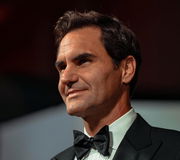

Alpine skiing is one of the most celebrated winter sports in the world. Its history dates back to the 1850s, and it is believed that Sondre Norheim, the legendary Norwegian skier, was the one who popularized modern skiing and gave the sport new wings with his innovations. Decades later, the sport expanded and hit the rest of Europe with the United States. Many years later, the FIS Alpine Ski World Cup came into existence, which is also considered one of the most prestigious events in skiing. The skiers from around the world gather on the bone-chilling snowy slopes to risk it all to lift the crystal globe that is presented to the winners of the competition.
Watch What’s Trending Now!
Skiing has only augmented its popularity in several regions of the world, especially in America. The nation has been a breeding ground for some of the legendary skiers who have soared to new heights with their athletic prowess. Mikaela Shiffrin is one of those acclaimed American skiers who has been absolutely magnificent throughout her career and has won numerous overall crystal globes in her decorated career. However, this year in March, she broke one of the globes while travelling. But what is so alluring about this trophy and why is it considered as one of the most precious trophy in sports? Let’s find out.
ADVERTISEMENT
The origin story of the crystal globe shimmers
They began the manufacturing of the crystal sphere in 1987, and two years later, in 1989, they were given the contract to craft the FIS globe for the first time. In a statement published in CNN, Alouis Adam, the operations manager of Joska, said, “Every season we have 33 of the small cups, 17 of the big cups, 17 for the nations cups and 177 medals of glass.” He further added, “I think of the last 25 years we have made over 2,000 different small and big cups.”?The manufacturing of the globe is also a long process where the trophy comes to life.

Reuters
Alpine Skiing – FIS Alpine Ski World Cup – Meribel, France – March 20, 2022 Switzerland’s Marco Odermatt celebrates on the podium after winning the men’s overall Globe trophy as Mikaela Shiffrin of the U.S. celebrates on the podium after winning the overall women’s Globe trophy REUTERS/Denis Balibouse
The glittering crystal globe is manufactured and designed by a Bavaria-based leading German glassblowing expert, Joska Kristall. The company is incredibly popular for designing and manufacturing several prestigious products that were presented to some renowned personalities, like the man himself, Arnold Schwarzenegger, but it is the FIS globe that is the pi?ce de r?sistance for the company. The company was established in 1960 and started its business with glass-cutting, later transitioning to glassblowing and hand-painting.
ADVERTISEMENT
The chrysalis of the trophy into a tangible form
As per Adam’s statement, it takes almost two days for the trophy to be completed, as it has gone through several intricate stages. The process starts with using a mass of molten glass at an extremely high temperature of 1,200 degrees Celsius. Then it gets its shape from JOSKA’s skilled glassblowers, who use a blowpipe to convert the hot glass into the desired form. Then the trophy is left to cool for 24 hours, and after that, a snow crystal design is carved on it using a diamond cutter.
ADVERTISEMENT
Read More: Months After Parting From Prized Possession, Mikaela Shiffrin Raises $1,000,000 for Notable Cause
Top Stories
Greg Biffle’s $4M Worth Prized Possession Still Without a Buyer Leaves NASCAR Fans Heartbroken

LIV Golf Braces for Another Possible Exit in Wake of Brooks Koepka Departure

Sean Payton Announces Retirement Plans as Broncos HC Demands Improvement From Bo Nix & Co. Before Playoffs

Biff Poggi All But Confirms Bryce Underwood’s Michigan Future After Announcing His Own Departure

Roger Federer Draws Criticism from Swiss Government Chief for Tourism Boom in Country

Amanda Balionis Confirms New Relationship Ending Months of Rumors

The next process is the FIS logo, the name of the discipline, and sponsor names, which are created later on in the crystal. Then the finished products are transported to the relevant venue. However, only the 33 best trophies out of 60 globes are picked for the event to ensure the quality and credibility of the trophy and the World Cup. The major competitive skiing event is reported to have been held in the late 19th century; it was in the year 1840 when central and northern Norway hosted the competitions and here we are, years later, with surging wins and even more impressive technological advancements to boot.
Watch this story:?WHO IS THE RICHEST WINTER OLYMPIAN? SHAUN WHITE, LINDSEY VONN, MIKAELA SHIFFRIN, AND OTHER?S NET WORTH COMPARISON
ADVERTISEMENT
ADVERTISEMENT
ADVERTISEMENT
ADVERTISEMENT

